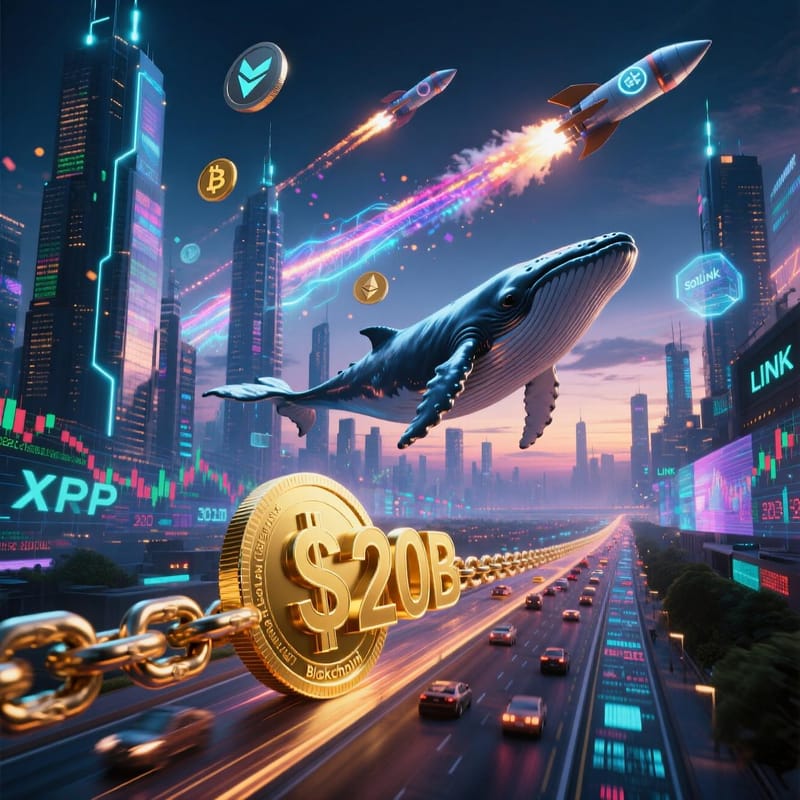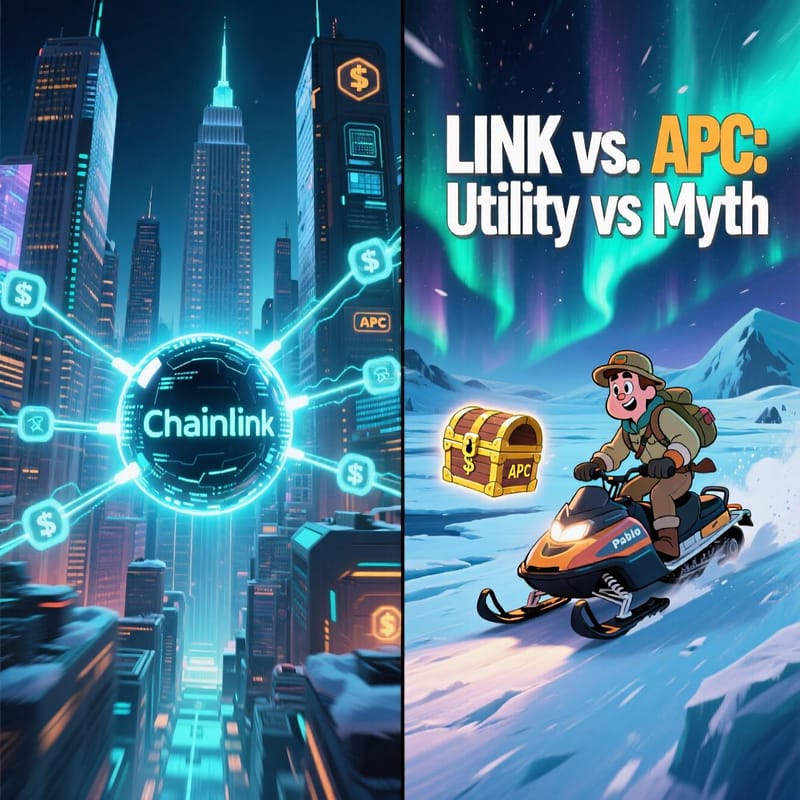Why Chainlink, Not XRP, Is the Real Engine Behind the $10T Tokenized Asset Revolution
Crypto analyst Zach Rynes (ChainLinkGod) argues that Chainlink—not Ripple’s XRP—is best positioned to dominate the tokenized asset era. With LINK securing $91B in DeFi value across 452 apps and deep ties to Swift, JPMorgan,

The Tokenized Asset Race: Speed vs. Security
As the world inches toward a future where real estate, bonds, stocks, and commodities are tokenized on blockchain, two names often surface: XRP and Chainlink (LINK).
On the surface, they seem like competitors in the same race.
But dig deeper, and you realize: they’re running different races entirely.
- XRP is optimized for fast, low-cost cross-border settlements—a digital rail for moving value.
- Chainlink is the trust layer—ensuring that the value being moved is accurate, compliant, and connected to real-world systems.
And when it comes to the $10–100 trillion tokenized asset economy expected over the next decade, security, data integrity, and institutional integration matter more than speed alone.
The Data Gap: $85M vs. $91B
The most striking evidence comes from DeFiLlama, the leading tracker of on-chain value.
- XRP Ledger (XRPL):
- Total Value Locked (TVL): ~$85 million
- DeFi Apps: 9
- Rank: #54 in blockchains by TVL
- Dominated by its native DEX
- Chainlink:
- Total Value Secured (TVS): $91 billion
- Supported Apps: 452+
- Market Share: 68% of all DeFi, 84% on Ethereum
- Rank: #1 in DeFi infrastructure
That’s over 1,000 times more capital secured by Chainlink than locked on the XRP Ledger.
And yet, XRP’s market cap is over 12x larger than LINK’s ($188B vs. $14B).
This valuation gap suggests a massive asymmetry in market perception vs. on-chain utility.
Why Chainlink Is the Institutional Choice
Speed is useful.
But institutions don’t just want fast transactions—they want trust.
Chainlink isn’t just an oracle. It’s an enterprise-grade middleware that bridges the gap between legacy finance and blockchain. Its tech stack includes:
- Decentralized Data Feeds – For real-time asset pricing
- CCIP (Cross-Chain Interoperability Protocol) – For secure asset transfers
- DECO – For privacy-preserving off-chain data verification
- Automated Compliance – For KYC/AML checks on-chain
- Verifiable Randomness – For fair NFT and token distributions
And the clients prove it.
Chainlink is already integrated with:
- Swift – For cross-border messaging
- DTCC – The world’s largest securities depository
- Euroclear – Global post-trade infrastructure
- J.P. Morgan, UBS, Fidelity, Mastercard, SBI, ANZ
- Central Bank of Brazil – For CBDC and tokenized deposit pilots
These aren’t experiments.
They’re live systems for tokenized bonds, equities, and payments.
Meanwhile, Ripple’s institutional use remains largely confined to cross-border payments via RippleNet—valuable, but far narrower in scope.
The Real-World Use Case: From Data to Ownership
Imagine a tokenized bond issued by a European corporation.
To function properly, it needs:
- Accurate interest rate data (Chainlink)
- Cross-chain settlement with the buyer’s stablecoin (CCIP)
- Compliance checks on the investor (DECO + Chainlink Proof of Reserves)
- Delivery vs. Payment (DvP) settlement (Chainlink’s enterprise services)
- On-chain reporting to regulators
Every single step relies on Chainlink’s infrastructure.
XRP could settle the final transfer in seconds.
But Chainlink ensures the entire process is trustworthy, compliant, and automated.
It’s the difference between a fast courier and the entire financial system that verifies the package’s contents.
The Road Ahead: Why LINK Has More Room to Run
Analyst Zach Rynes (ChainLinkGod) puts it bluntly:
“$LINK is better positioned than $XRP to benefit from the trillions of dollars in tokenized assets set to come onchain.”
His reasoning is simple:
- Chainlink is already the dominant infrastructure for DeFi and institutional blockchain use.
- It’s embedded in the systems that will handle tokenized assets.
- Its market cap is still tiny compared to the value it secures—creating massive upside potential.
If the tokenized asset market reaches even 1% of global financial assets ($10T), and Chainlink maintains its 60%+ share of the infrastructure layer, LINK’s valuation could explode.
XRP may be a useful rail.
But Chainlink is the rails, the signals, the security, and the station.
Final Takeaway: The Invisible Backbone of Web3 Finance
Ripple built a highway for money.
Chainlink is building the entire transportation ecosystem.
- XRP is about moving value.
- Chainlink is about proving, securing, and automating value.
In the coming wave of tokenized real-world assets, data integrity and institutional trust will be the gatekeepers of adoption.
And on that front, Chainlink isn’t just winning—it’s operating in a league of its own.





